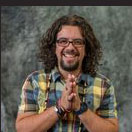
Co-teaching Courses
One of the joys of teaching is to teach with somebody else. In my years of teaching, I have had many great experiences and I cherish each one of them very much. In past blogs I said that to teach is to create worlds. If that is so, I would affirm that to teach together is to have various worlds crossing, colliding, expanding and knowing each other. Fascinating worlds that call us to pay attention, delve into and live in for a while.
To co-teach is not only an adventure but also a time made of many challenges and commitments. For any class to function well with more than one teacher, there must be a desire to teach together, mutual admiration, a commitment to vulnerability as well as to not be afraid of each other. If I don’t admire and trust the person I am teaching with, I will have a hard time accepting everything s/he says, from pedagogies to the shape of the class, final projects to grading. But if we do admire each other, we rely on each other for each class, we trust that the other is there to expand us, and we hope that our co-teacher will teach us many things.
I have taught with fantastic teachers and from each one of them I learned so much. To use an image, the possibility of teaching with people from other fields is like diversifying our own crop, enriching our soil and keeping its diversity. We know from agriculture that mono-cultures weaken and exhaust the land, killing its biodiversity. Teaching is like fertilizing and planting seeds of knowledge and love. So we must expand and learn about new soils, the conditions of the elements, the gifts of that particular ground, the promises of new seeds, new ways to care and process the land and the possibilities to harvest new fresh fruits! Co-teaching is like plowing a soil to its best, multiplying its possibilities as to make it rich to receive and to give. Co-teaching multiplies “learning outcomes” in the lives of the students and as the parable of Jesus says, it “bears fruit and yields, in one case a hundredfold, in another sixty, and in another thirty." (Matthew 13: 23)
However, to co-teach demands a lot of work. Among many things we need to do is to get to know each other, spend time thinking, dreaming, proposing, preparing and creating the syllabus/map/ground/soil. Again, co-teaching is like sowing mutual seeds of wisdom and love on a field that will possibly yield many fruits.
Then teaching is a challenge. Since it is the joining of teachers of different fields, the readings of the same material will be different. We must engage with open pedagogical hearts, reading other fields' materials with excitement and working together to make connections.
I could tell many stories but will share just a few. One day I was teaching a class called “the Body” with a historical theologian and after I finished my talk, my co-teacher said: “what Professor Carvalhaes has said is not quite true.” And went on to “correct” my thinking. I then replied to his corrections saying he had gotten it very wrong and that the class shouldn’t listen much to him. While this is a true story, this conversation could have only happened because we were very good friends and we felt very comfortable engaging and teasing each other in this more funny open way. The final evaluations of this class highlighted the deep engagement between teachers and offered a way to disagree with respect.
With another professor, we were very distinct in ways of preparing class: one very anxious and the other more loose. A process of learning about each other had to happen so that neither of us would be (too) anxious. With another professor we had a very difficult issue to deal with in class one day and s/he came to my rescue showing the class we were together. Students can play favorite teachers and that can destabilize the mutuality of trust between teachers. With another teacher s/he complained publicly about a reading I had chosen for the class and later we needed to talk about it. With another we kept having new ideas every week and the class kept changing. With another one the very conversation in class flew so easily as we were picking up where the other left off in a smooth way, affirming and challenging each other always.
To tread in somebody else’s field can be scary. Again, it demands a high level of commitment, trust and admiration. As I mentioned earlier, we need mutual admiration. And admiration is just one of the aspects of love. The best co-teaching classes are often taught by those teachers who have mutual admiration, a certain kind of love for each other and trust fully each other in the process.
My fellow co-teachers have sowed a vast diversity of seeds in my field. Without knowing, they were plowing the soil of my own body, heart and mind, blessing and bearing many fruits in me, “in a hundredfold, in another sixty, and in another thirty.” Now, after all these experiences I can look at my own field and see different birds coming to make nests, I can see fruits growing that I never imagined, I can see a horizon across the field that I had never perceived and I can now harvest fruits that I will serve in larger baskets in other courses that I teach alone or with other sowers/teachers.